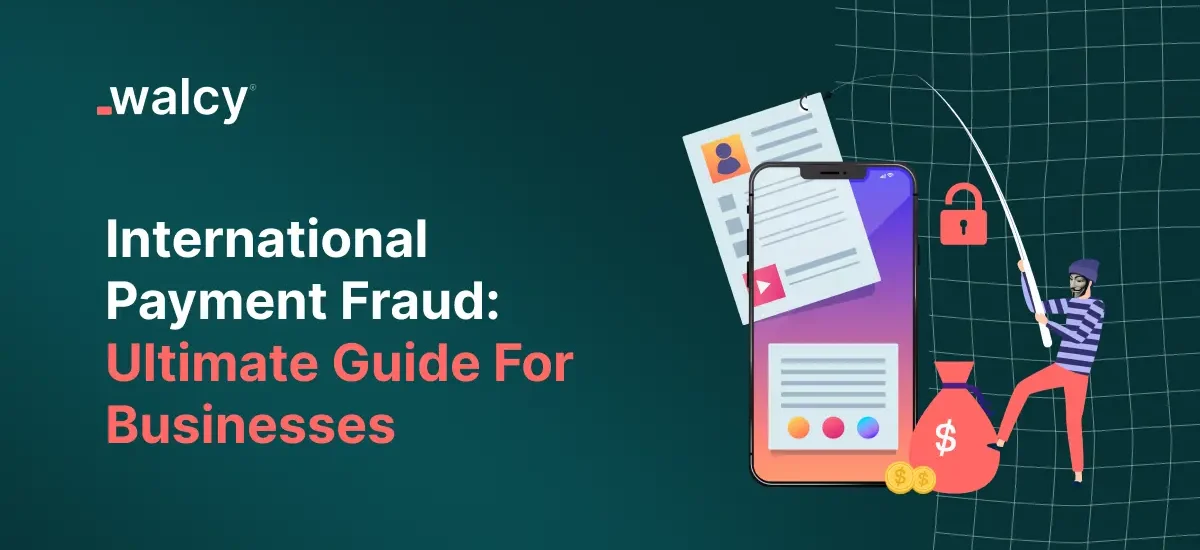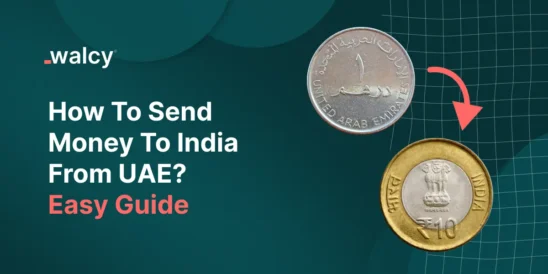International payments play a major part in the global business environment of today. it has already be the need of todays world. This ever-increasing volume of cross-border transactions has also raised instances of international payment fraud. Therefore, it becomes important to understand the nature of such fraudulent activities and how to safeguard oneself. This guide aims to create an opportunity for readers to get an overview of international payment fraud, its common types, methods of occurrence, and the ways to prevent it.
Understanding International Payment Fraud
International payment fraud is considered to be unauthorized or fraudulent transactions across borders. Criminals take advantage of weak points in the global financial system and find organizations and individuals as easy targets to milk money through international payment fraud. These fraudulent activities can occur through many channels, such as online banking, bank transfer or wire transfers, or automated clearing house transactions.
This kind of fraud can cause serious financial loss and reputation damage; hence, it is of utmost importance to keep updating ourselves about their activities. Fraudsters are using several sophisticated methods of how fraud can be perpetrated, such as phishing, social engineering, and hacking, which have made it quite difficult to detect and prevent such fraudulent activities.
How does International Payment Fraud Happen?
Several sophisticated ways are used to execute international payment fraud. The common scenarios include:
Phishing and Social Engineering:
A scammer will send an email, call, or a message supposedly from an organization where the receivers carry out transactions—having gathered the information to log in—and then access their accounts to authorize a rogue operation.
Comprised Business Emails:
Cybercriminals hack into the email accounts of businesses to intercept important payment instructions for transferring the payment into their accounts. This type of fraud, commonly called Business Email Compromise (BEC), is often committed by monitoring email traffic for weeks or months to understand the timing and generic content—mostly by the communication style and tone—which then can be drafted and timed in such a way as to trick business accounting personnel into believing it is authentic communication.
Impersonation and Spoofing:
Criminals impersonate real organizations, such as suppliers or business partners, to get the target to make payments into a fraudulent account. This might be done by spoofing the e-mail address or telephone number so that it seems like it is coming from someone you are trusting. Sometimes fraudsters may set up a website or social media profile to enhance their deception and further gain the trust of the victim.
What Are Common Types Of International Payment Frauds?
Essentially, understanding the various kinds of payment frauds is a way to prevent them. Some of the common ones include:
Authorized Push Payment Fraud:
This technique involves tricking the target into initiating payments into fraudulent bank accounts. Authorized push payment fraud is even more pernicious because the victim voluntarily makes the payment, having been convinced of a falsehood. Criminals execute such fraud by creating urgency or authority, for example, acting like a senior executive or one of their trusted suppliers, getting a victim to quickly act without verification.
ACH Payment Scams:
The ACH payment is a kind of electronic funds transfer. Hackers get money into their account or, in some cases, divert money from that particular transaction to a fraudulent account using vulnerabilities at some step within these ACH transactions. These could be payroll systems, vendor payments, and other routine transactions normally accomplished through compromised credentials or forged authorization.
Payment Redirection Scams:
Basically, the fraudsters pretend to be a real business partner or supplier and they redirect the payments into their fraudulent account. This kind of scam is often done through access to the target organization’s email account to monitor communications in order to time any fraudulent request perfectly so that the payment redirection is legitimized.
B2B Payment Fraud:
Business-to-business (B2B) payment fraud targets businesses involved in international trading. The strategies by fraudsters may include fake invoices and another means by which fraudsters impersonate senior executives is CEO fraud to sanction huge payments. Most of these scams have very fine details regarding company operations and knowledge of payment procedures to present a plausible, urgent demand.
How To Avoid International Payment Fraud
Preventing international payment fraud will require a multi-faceted approach. Some such effective ways are mentioned below.
Verification Procedures:
Institute strict verification procedures for all kinds of international payments. The details of the payment need to be checked with the recipient at another avenue of communication before actually processing the transaction. This extra step can prevent the fraudsters from intercepting or redirecting the payments in several cases.
Employee Training:
Conduct regular training for employees regarding the identification of fraudulent tactics and emphasize safety measures. Awareness and vigilance are the most essential components in fraud prevention. Training must include simulated phishing exercises and details of current fraud trends and techniques.
Technology Solutions:
Adopt cutting-edge solutions in multi-factor authentication, encryption, and fraud detection to ensure security is embedded in the payment process. Ensure that the systems are updated and patched with frequency to mitigate their vulnerabilities. All of these technologies add more layers of protection to ultimately make it more complicated for fraudulent parties looking to gain access to a given system and intercept transactions.
Monitor Transactions:
Monitor all transactions and study them for any suspicious activity. Set up alerts on big or strange payments to let it detect possible fraud at an early stage. Continuous monitoring of all transactions helps to identify irregular patterns and unauthorized activities at a very early stage, thus allowing the user to timely take necessary measures to avoid losses.
How To Refund Fraud Payment
Recovering funds lost to international payment fraud can be challenging but not impossible. Steps to take for a fraud payment refund include:
- Report immediately to your bank or payment provider:
The earlier, the better. With quicker responses, there are greater chances of returning the funds. Sometimes, quick responses may lead to fraudulent account freezing. The funds cannot be withdrawn by fraudsters in such cases.
- Legal Action:
Chasing down fraudsters or any other involved parties for fraud committed may sometimes prove instrumental in getting back lost finances. It involves reporting the case to law enforcement agencies and working with lawyers to institute proceedings necessary for recovery, like court orders, to recover money stolen. This can be complex, but most times, necessary, especially in high-value financial losses.
- Insurance Claims:
If one is covered against monetary losses through fraud, execute a claim with his/her insurance company. Make sure that you have fraud protection coverage as part and parcel of your insurance coverage. Review it from time to time to confirm its coverage of the different kinds of fraud and update it if necessary to include modern threats. Filing an insurance claim can help alleviate and help lessen the blow to your financial situation from fraud.
Conclusion
Businesses and individuals can indirectly be secured from their financial transactions only by being aware of the types of fraud and adopting robust protection methods. Also, knowing how to react in case of fraud is very important. Staying informed, vigilant, and proactive in saving against financial and reputational damages from international payment fraud is very important. In most cases, such protection and resumed resistance can be provided through regular revision of the security measures, awareness programs for employees and stakeholders to become vigilant against such risks, and using modern fraud detection technologies.
Know about international payment fees.
Know about saving money in international transactions.
FAQs
What is the most common international payment fraud?
Among some of the common ones is push payment fraud, in which victims are persuaded to give the go-ahead approval to effect payments to fraudsters.
What are the ways by which businesses can protect themselves from B2B payment fraud?
Businesses can save themselves by enforcing stringent verification procedures, training employees, and using cutting-edge security technologies.
If I am a victim of international payment fraud, what do I do?
Report the fraud immediately to your bank or payment provider; if necessary, take legal action, and file an insurance claim if you have fraud loss coverage.
How does technology help in preventing payment fraud?
There are several ways in which technology helps to prevent payment fraud: multi-factor authentication, encryption, fraud detection software, and secure communication channels.
What are some of the indications that the e-mail could be part of a phishing scam?
Such red flags can be demands of personal or financial information, urgent language, an email address that sounds suspicious, grammatical errors, and links to unknown websites. Always check the source before acting upon such e-mails.
How can people ensure their transactions are safe?
Security can be assured by having strong, unique passwords, enabling two-factor authentication wherever possible, not using public Wi-Fi to handle sensitive financial transactions, and watching over one’s bank account regularly for unauthorized activities.
Do follow us on Facebook and Linkedin, to stay connected with us.



